#The Kingdom of Prester John
Photo

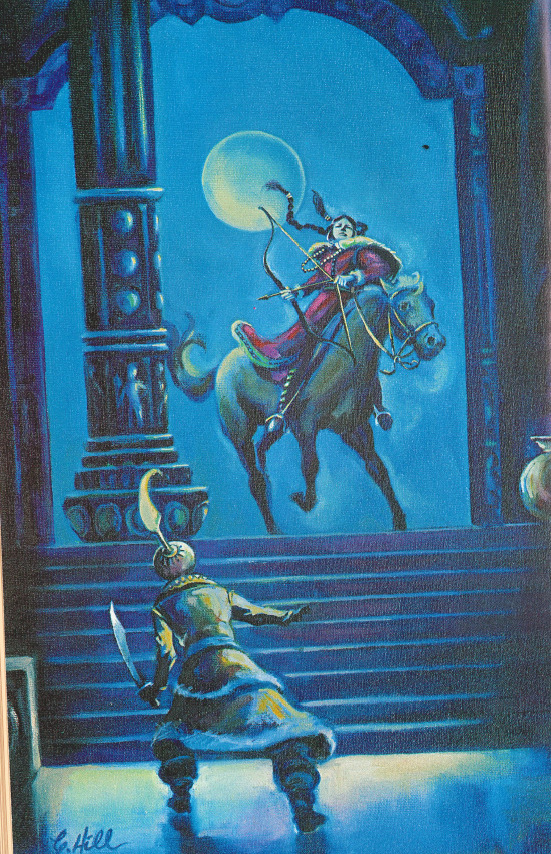
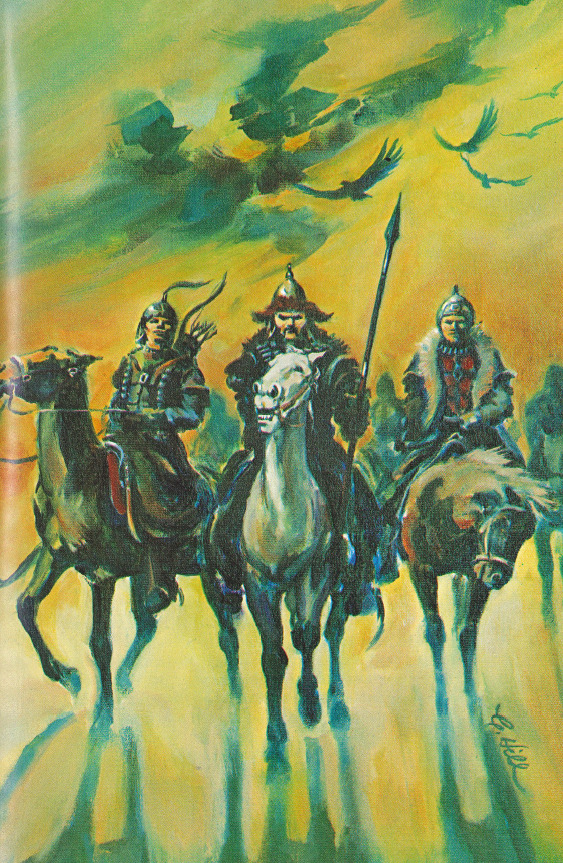
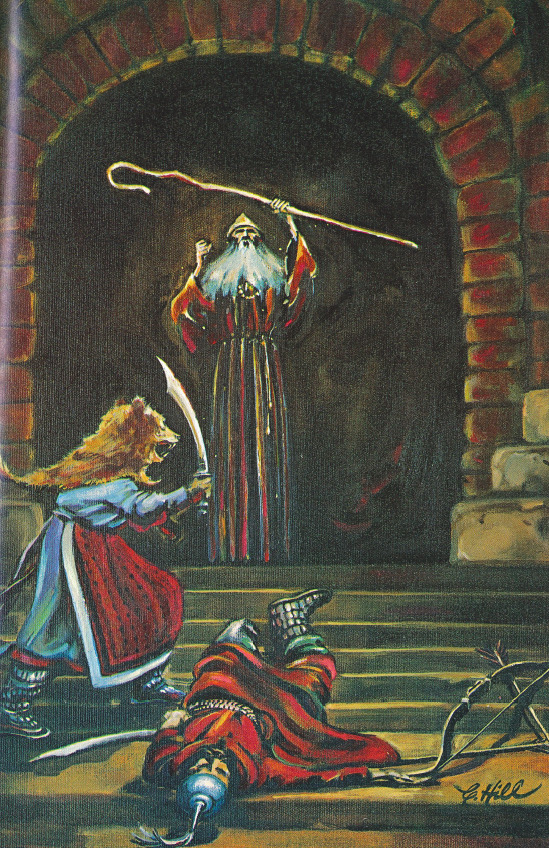
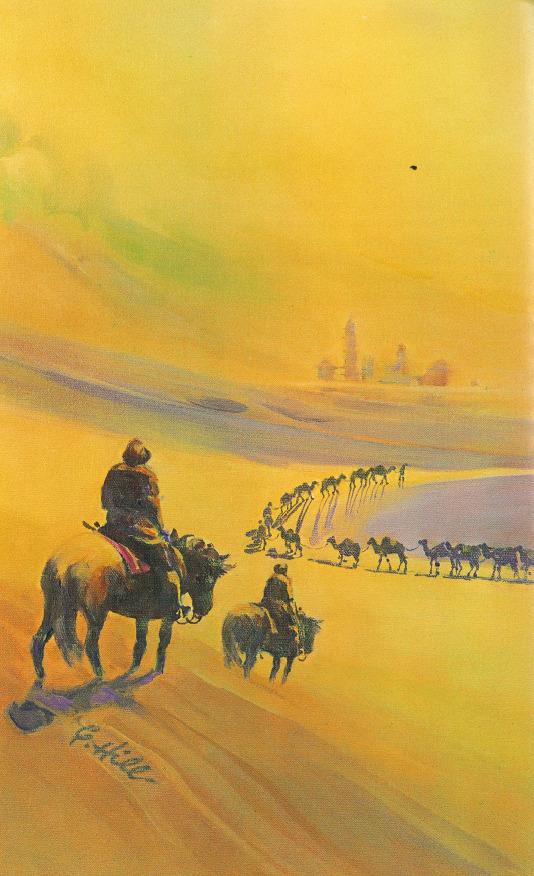

Cathy Hill’s illustrations for the 1975 edition of Harold Lamb’s Three Palladins, a Central Asian story about a young Temujin, later to be known as Genghis Khan, and his two great companions, including his warrior woman sister. The trio encounter the legendary kingdom of Prester John and its strange magic. Originally published in 1923, in the greatest pulp magazine of all time: Adventure.

Harold Lamb was the greatest of that first generation of adventure writers who had a hint of the strange and otherworldly, the mysticism of the east, that would eventually result in the fantasy genre. He is forgotten now, but he’s aged so much better than nearly everyone else doing adventure historicals from the 1910s and 1920s.
2K notes
·
View notes
Text
Remember to check your kids' Halloween candy 'cause last year somebody tried to hide the lost kingdom of Prester John in a snickers bar
59 notes
·
View notes
Text
Cryptozoology: Bigfoot
Cryptogeology: The invisible mountain
Cryptogeography: The Kingdom of Prester John
Cryptogeophysics: Lemuria
Cryptophysics: Wallclipping in real life
Cryptolinguistics: Scandinavian Hyper-Basque
11 notes
·
View notes
Text
I'm the last living descendant of Prester King John's hidden kingdom, but you wouldn't know it, since I spend my time here on tumblr....
4 notes
·
View notes
Text
It is also said that Genghis Khan wanted to attack the kingdom of Prester John, but that the latter repulsed him by unleashing thunderbolts against his armies.
René Guenon
18 notes
·
View notes
Text
Prester John was a legendary Medieval king that inspired many rulers and explorers to set out from the safety of their homes into distant lands, many in the hope of finding his long-lost kingdom. There are clues to his location and life in a famous letter he was said to have written, but no one ever found him or the ruins of his dominion.
24 notes
·
View notes
Text
Ancient Africa - TV Tropes
Africa, but back when the fabulous wealth and towering achievements of its civilizations left the known world in awe.
Though Egypt is by far the best known of these, other sophisticated and literate empires on the continent, such as Kush, Axum, and Meroe, flourished for centuries south of the lands of the pharaohs. In fact, at one point the kingdom of Kush actually spread beyond the Sudanese Nile and conquered and ruled Egypt for about a century as its 25th Dynasty (ca. 734-664 B.C.).
Meanwhile, to the west, complex cultures like the Nok and Dar Tichitt cultures laid the groundwork for the vast west African empires that would arise in later centuries.
In the Maghreb, Phoenician colonists in conjunction with Berber kingdoms would give rise to the powerful Carthaginian empire which struggled with Ancient Rome for domination of the Mediterranean world.
In the northern reaches of the Sahara Desert there developed a sophisticated society of people known to us as the Garamantes who used elaborate tunnel networks to exploit underground water resources for their cities in otherwise unforgiving desert.
In Ethiopia, Axum quickly rose from city-state to empire, and for a time spread all the way into southern Arabia, where the exploits of its kings would earn a mention in the Quran.
In third century Persia, Axum was even named as one of the great four empires that dominated the world by Mani.
Medieval era tales of wealthy West African Empires like Ghana and Mali, mingled with rumors of Ethiopian kings that fueled the legend of Prester John in Europe.
The ancient Chinese interacted with the Swahili city-states that dotted the East African coast and plied the high seas of the Indian Ocean.
7 notes
·
View notes
Text

Visit worlds that once were and never will be (except in our imaginations) with Frederic Walker's well-researched solo TTRPGs Scribe and The Kingdom of Prester John - we have them in print at UKGE stall 1-592! You can also find Frederic's other games here: https://fredericwalker.itch.io
0 notes
Text
The Catalan Atlas of 1375 inspired Henry to organize expeditions to find new trade routes to Africa that bypassed land routes in Italy that were controlled by powerful city-states like Genoa, Florence, Milan, Naples, Venice, and Naples.
He also wanted to find the eastern kingdom of the legendary Christian king, Prester John. Henry and others hoped that by uniting with Prester John, the Christian kingdoms in Europe could defeat their Muslim adversaries during the Crusades. In 1420, he was appointed the Grand Master of the Order of Christ.
Prince Henry earned his title “the Navigator” because he assembled a learned group of designers and maritime experts to design new ships, maps, and navigational instruments. Henry then funded expeditions to use this knowledge to sail the High Seas and explore the West African coast.
Over time, he sent 14 expeditions south toward Africa to explore what was known as the “Sea of Darkness.” Building up a massive body of maritime know-how with each expedition, Henry oversaw the first stages of a process that helped Portugal build a global empire.
Slavery of Africans started in 1420 and again in the later expedition of 1441 to bring African slaves to the new world, of course the first groups were indentured servants that were granted land at the end of their contracts because chattel slavery didn't start until Anthony Johnson a Black Indentured Servant himself won a case against run-away slaves which were considered as Black and white is when slavery became race related even though race wasn't official until after Bacon's Rebellion. 1619 is really a falsehood because slavery started when the Europeans first set sail.
0 notes
Text
There were many specific consequences of Islamic culture adopting the singular universal empire of the Ummayyads:
Among the consequences of the victory of the unified Imperial vision of the Ummayyads was a much more powerful Islamic army that played a key part in the final fall of Axum. The various wars fought by Axum and the Zagwes against the Islamic Sultanates and Emirates ringing them are the closest reality ever came to the "Prester John" Legend, which shall be discussed tomorrow along with the broader extension of Black military history in the late medieval era, which will also include a significant widening of regions in Africa.
This is not because these areas do not have histories, this is because the track record here follows the course of *written* histories, which begin outside Ethiopia, Egypt, and North Africa in Arabic and then switch to the Roman or Cyrillic alphabets. Abyssinia/Ethiopia also had the unfortunate distinction as a powerful Christian state right next to Mecca and Medina of being one of the most convenient places for any damn fool who could pay for an army to call himself Mujahideen and sally forth to assault it. This reality in turn shaped that Ethiopian empires have tended to be very specifically barracks states, which is why like Japan Ethiopia had a rather simple time adjusting to the modern age in a way other societies didn't. And unlike the Muslim world but like Japan less cultural chauvinism in refusing to admit traditional ways weren't up to facing indirect fire artillery.
#lightdancer comments on history#black history month#against eurocentrism#ethiopian history#ethiopian-islamic wars
0 notes
Text
"The Middle Ages of so called Tradition, or of occult philosophy (or la pensee sapientielle), an eternal and rather eclectic ramshackle structure, swarming with Knights Templars, Rosicrucians, alchemists, Masonic initiates, neo-Kabbalists, drunk on reactionary poisons sipped from the Grail, ready to hail every neo-fascist Will to Power, eager to accept as a visual ersatz for their improbable visions all the paraphernalia of the Middle Ages number 3, mixing up Rene Guenon and Conan the Barbarian, Avalon and the Kingdom of Prester John. Antiscientific by definition, these Middle Ages keep going under the banner of the mystical weddings of the micro- with the macrocosm, and as a result they convince their adepts that everything is the same as anything else and that the whole world is born to convey, in any of its aspects and events, the same Message. Fortunately the message got lost, which makes its Quest fascinating for the happy few who stand proof-tight, philology-resistant, bravely ignorant of the Popperian call for the good habit of falsification."
-Umberto Eco from "The Return of the Middle Ages" in Travels in Hyperreality
1 note
·
View note
Text
THE TEMPLE OF PRESTER JOHN
The Prester John myth spread across many Asian regions before becoming focused on Africa in its most recent manifestation. The role of the imagined kingdom, especially during the era of the crusades, was to act as a bulwark against the increasing dominance of the Islamic caliphates. In time the myth became focused on Ethiopia where […]THE TEMPLE OF PRESTER JOHN

View On WordPress
0 notes
Text
Timucuan Indians are the Tamerikhans
Timucuan Indians are the copper colored or swarthy Tamerikhans (Tameri-Khans) depicted on the 1657 map of La floridas which has the Nationality of Tamerikaans listed under the plaque of La Floridas on this map.
#foogallery-gallery-3206 .fg-image { width: 150px; } #foogallery-gallery-3206 .fg-image { width: 150px; }
Moors land
Moorman (Mormon) means Moor, and Blackamoor according to the Dictionary of the English and Dutch Languages. We know that Moor and Blackamoor both mean dark skin or Negro in some dictionaries
Kingdom of Prester John
Closeup view of the 1635 Blaeu Map of Central Africa - the Kingdom of Prester John. Yes, Prester John was the Emperor of Aethiopia (Ethiopia), but which Ethiopia because there was three of them in ancient times.
Prester John Emperor of Abyssinia
This is a painting of Prester John the King of Abyssinia (Ethiopia Superior in the Americas). Prester John was King David of the Bible and John the Baptist (the Fountian of Youth) and he was King of the three Indies/ three Ethiopia's, aka, the World. The Magical kingdom of Disney Land in Orlando, Florida was one of his palaces.
Fountian of Youth Entrance
Florida has the highest concentration of freshwater springs in the world, plus the legend of the Fountian of Youth puts it in Florida (Ethiopia), so yes, Florida would be a good place to look for the fountain of youth but where? We have clues since Saint Augustine Florida is the oldest city and America and there is a Fountain of Youth Archaeological Park located on San Marco Avenue with the words, Fountain of Youth on its entrance.
Map of the Original Garden of Eden
Map of the Original Garden of Eden in Bristol, Florida. This map lists Florida as Ethiopia (Cush/ Kush) and Assyria (Babylon, Akkadian (Acadian), Iran, Turkey: lower Mesopotamia). The Assyrians were allies of the Egyptians, aka, the Tamerikaans (Tameri-khans).
1718 map of La Louisiane
1718 French map of La Louisiane. The Spanish called this landmass La floridas (Tameri). The British called this landmass Carolana (Black land).
Carolana, "The land of the Blacks."
The interesting thing about the Ouachita Mountains and the Arkansas Valley (Indus Valley) area is that there was once a Nahari, Arkansas near this area. Naharina means, "Nile Land," and you can locate Nahari on this 1741 Map of Carolana and the River Meschacebe & c. Yes, Carolana (Carolina) was once a vast Country, and it is part of Grand or Superior Turkey, since we know that North and South Carolina (Kara-lana) in America was ancient Turkey. Carolana is Turkish and it means “Land of the Blacks”, aka, Ethiopia or Tameri (Lower). For example, Caro/Kara in Turkish, means “Black,” while Lana is Turkish and Latin for “Land.”
Tameri, "The land of the Maurs."
In this post is a 1657 map of La floridas that is identical to the 1741 map of Carolana that was shared above, since this map of La floridas is identical in size, shape, and location, so we are dealing with the same land and territory here. The interesting thing about the map of La floridas is that it has “Tamerikaans” (Tameri-Khans), written above the plaque of Florida. Tameri is an old name for ancient Egypt, and it means land of Mary (Mauritania) or the land of the Maurs. La Florida or Carolana (Lower Ethiopia/Egypt) used to be part of the Washitaw Proper, aka, Louisiana county, according to old maps from the 1700's, so... yes..., this landmass was indeed, Tameri, "the Maurs land or the land of the Maurs." Look how big La Florida used to be and it covered several states reaching all the way over into Texas and reached all the way up into Canada. Texas and several other states used to be part of Mexico. Mexico was also Southern Arabia. Mexico means "In the Center of the Moon."
Timucuan Indian with bow
Black Timucuan Indian with bow and wearing a turban on his head.
Timucuan Indians in Florida
Black Timucuan Indians in Florida 1562-1568. Some of the images in this painting were obviously whitewashed, but we will take it. I love the turbans these Timucuans wore, since they were Ethiopians (Kushites) or Moors.
Black Timucuan Indian woman of Royalty
Black Timucuan Indian woman of Royalty holds ceremonial Turkey Vulture effigy incense burner.
Timucuan Indian
Black Timucuan Indian with turban on his head and posing with a bow and arrow
Black Timucuan Indian Chief in St. Augustine, Florida.
Black Timucuan Indian Chief in St. Augustine, Florida, with his tribe. This chief is wearing a turban and a Phoenician red attire.
Timucuan Map
Timucuan Map and other Florida Indian Tribes.
Additionally, Timucuan are Tamerikhan are etymologically and phonetically the same word due to similar spelling and similar pronunciation. However, let’s break it down even further since the root of Timucuan is Timu (Tame), which is short for Tameri since the vowels are sacred and interchangeable, and were sometimes omitted in words.
The suffix of Timucuan is Cuan, which is obviously Khan since the letters C and U in Cuan are equivalent to the letters K and H in Khan, and these two letters can be substituted because they are interchangeable, like vowels. Therefore, when you combine the prefix and the suffix of Timu-cuan you will form the word Tamerikhan using my breakdown or interpretation. Khan (Can) is an Asian title that means king or priest.
Tamerikhan is one of the root-words of America. For example, T-ameri-khan is American if you remove the letter T from in front of the word Tamerikhan. Tameri or Amaru (T-amaru) is derived from the Sumerian god Amurru. Tameri is also an old name for Egypt, and it relates to Ethiopia Superior, aka, Abyssinia, and Assyrian, which was the huge landmass known as La floridas (Tameri or Ethiopia), La Louisiana (Acadian=Akkadian= Sumerian, Assyrian & Babylonian), and Carolana (Black land). Tameri also means the land of the Maurs or the land of Mary: https://www.americaistheoldworld.com/nineveh-was-jacksonville-florida/
The blog post shared above, “Jacksonville is Nineveh,” proves that Jacksonville, Florida was the Biblical Nineveh (Assyria), and it proves everything stated in the above paragraph. In the said blog post is a map of the Original Garden of Eden that designates the State of Florida as the Biblical Ethiopia (Abyssinia) and Assyria.
The Timucuan Indians had a vast territory of land that covered most of North Florida and central Florida, prior to the Spanish invasion of Florida in the 1500’s, as you can see by viewing the map of the territory of the Timucuan Indians. The territory of Timucua included Jacksonville, Saint Augustine, Callahan, Tampa, Orlando, etc.
The Timucuan were the first Natives of Florida, and they were a race of giants. The average height for the Timucuan man was between 7 and 8 feet tall. The average lifespan of the Timucuan Indians was between 300 and 350 years, according to Dr. Longo’s video from the YouTube channel “Old World Florida” entitled, “Hurricane Special: Audio Didactic + Dr. Longo”: https://www.youtube.com/watch?v=IMBQ8Er7Eg0.
Dr. Longo and I believe that the reason the Timucuan Indians were able to live for so long was due to a healthy diet and the fresh spring water from the Fountain of Youth located in Saint Augustine, Florida, which is in Timucuan territory (Ethiopia and Assyria).
Saint Augustine, Florida is the oldest city in America, allegedly founded by the Spanish in the Early 1500’s during the Spanish invasion. However, the problem with this academic lie is that “An archaeological dig in St. Augustine in 2006 revealed a Timucuan site dating back to between 1100 and 1300 AD, predating the European founding of the city by more than two centuries. Included in the discovery were pottery, with pieces from the Macon, Georgia area, indicating an expansive trade network; and two human skeletons. It is the oldest archaeological site in the city.[8]” [end quote from: https://en.wikipedia.org/wiki/Timucua].
This means that the Venetian (Phoenician) Gothic Architecture (Moorish or Tartarian architecture) that use to cover Saint Augustine, Jacksonville, and all of Florida, was built prior to the Spanish invasion of the 1500’s by the Maurs or the Tamerikhans if you hate the term Maur.
One of the master builders of Prester John’s Kingdom of India Superior/ Ethiopia Superior (Abyssinia or La Floridas) was Saint Thomas the Apostle, the Patron saint of India, who was a magi (magician) that built some of these Gothic structures with the use of magic. “Gothic comes from goetia (‘to elevate by magical force’), whose extension is goeteuein (‘to bewitch’)”. Gothic Architecture is also a Moorish or a Tartarian mode of workmanship, according to the textbook, “A Dictionary of the Architecture and Archaeology of the Middle Ages.” Gothic building is also Castle building that comes from Ethiopia since the oldest castles are in Ethiopia, but which Ethiopia since it was three of them? We have a connection to Ethiopia since Tameri (La Floridas) is Ethiopia Superior and India Superior, aka, the land of the Maurs or Moorenland, which means the country of the Maurs. Ethiopia was Moorenland, according to the definition from Webster’s Dictionary.
The Emperor of Ethiopia Superior (Abyssinia) or La Floridas was Prester John (Saint John). This blog post has a map with Prester John being designated as the Emperor of Abyssinia and Ethiopia Superior. In this post is a painting of Prester John that designates him as the Emperor of Abyssinia and it shows him holding the Phoenician Taw (X) in his hand and wearing green and red, which are the colors of the Maurs (Saracens) and Israel: https://www.americaistheoldworld.com/the-greater-morocco-was-in-the-americas/.
I love the little Dwarf, Smurf, Pygmy, or Leprechaun in the painting that his holding the magical mirror of Prester John that allowed him to see all the events in the world. Prester John was also the Emperor of India and the King of the Tartars (Tartarians), etc. One of my favorite titles that Prester had was the Green man and the Green Knight, since there is an enchanted Green Swamp near his magical kingdom in Walt Disney World Florida: https://www.americaistheoldworld.com/marrakesh-was-orlando/.
Prester John, aka, King David El (the Biblical line of King David) is also associated with the Fountain of Youth that he established in his kingdom in Ethiopia that he bragged about drinking from six times in his famous letter from the year 1165 that went to every ruler in the world, so Prester John correlates with the Timucuan Indians long life span, since Prester John was also known as the immortal priest King since he lived to be over 560 years old; however, some sources say he lived to be over 1200 years old since he had contact with before Christ era Kings like Xerxes and Alexander the Great, who were mere pawns to this powerful Magi King.
Other titles of Prester John: John the Baptish of Bible (Fountain of Youth), Melchizedek (Thoth), Prophet Elijah, Enoch (Thoth), the Fisher King, King of Kings, the Negus (Pharoah), Angel Gabriel (Thoth), Lord Shiva, Enki, Lord of the Rings, Lord of the seen and unseen worlds, King Merovech (founder of the Merovingian Dynasty), the dragon king, the dragon Emperor, the Grand Khan, the Khan father, the Highlander, the King of the Scots, King of the Orient, Grand Master of the Knights Templars, the Knight of the Serpent, the King Knight, the giant slayer, and etc.
The Spanish conquerors described the Timucuan people as Pictish (Picts) in appearance. We know that the ancient Picts of Scotland and Ireland were Swarthy (Black) people from the Iberian Peninsula, according to Romain Historian Pliny.
You can also see post images of the Timucuan people and as you can see, they were swarthy Maurs/ Muurs (Moors) from the land of the Maurs, Tameri or Ethiopia Superior (Abyssinia) in La Floridas. The Timucuan Indians in the images are mostly wearing turbans, which is a Hebrew and Moorish tradition or custom. Dr. Longo whitewashed the Timucuan Indians and other Indian tribes in his video, so please avoid the hijack when viewing it.
But what if La Florida was the original Iberian Peninsula? My blog post, “Gibraltar of the West,” demonstrates that Florida was the original Iberian Peninsula, home of the Garden of Eden, home of the Fountain of Youth, home of the Garden of Hesperides, and the Original Barbery Coast: https://www.americaistheoldworld.com/gibraltar-of-the-west/.
The Timucuan Indians were the Ethiopians and the Assyrians of Florida:
“The Timucua were a Native American people who lived in Northeast and North Central Florida and southeast Georgia. They were the largest indigenous group in that area and consisted of about 35 chiefdoms, many leading thousands of people. The various groups of Timucua spoke several dialects of the Timucua language. At the time of European contact, Timucuan speakers occupied about 19,200 square miles (50,000 km2) in the present-day states of Florida and Georgia, with an estimated population of 200,000. Milanich notes that the population density calculated from those figures, 10.4 per square mile (4.0/km2) is close to the population densities calculated by other authors for the Bahamas and for Hispaniola at the time of first European contact.[1][2] The territory occupied by Timucua speakers stretched from the Altamaha River and Cumberland Island in present-day Georgia as far south as Lake George in central Florida, and from the Atlantic Ocean west to the Aucilla River in the Florida Panhandle, though it reached the Gulf of Mexico at no more than a couple of points.
The name “Timucua” (recorded by the French as Thimogona but this is likely a misprint for Thimogoua) came from the exonym used by the Saturiwa (of what is now Jacksonville) to refer to the Utina, another group to the west of the St. Johns River. The Spanish came to use the term more broadly for other peoples in the area.[3] Eventually it became the common term for all peoples who spoke what is known as Timucuan.
While alliances and confederacies arose between the chiefdoms from time to time, the Timucua were never organized into a single political unit.[2] The various groups of Timucua speakers practiced several different cultural traditions.[4] The people suffered severely from the introduction of Eurasian infectious diseases. By 1595, their population was estimated to have been reduced from 200,000 to 50,000 and thirteen chiefdoms remained. By 1700, the population of the tribe had been reduced to an estimated 1,000 due to slave raids from Carolinian settlers and their Indian allies. The local slave trade completed their extinction as a tribe soon after the turn of the 18th century.” [end quote from: https://en.wikipedia.org/wiki/Timucua].
The fact that the Timucuan Indians experienced the Slave trade is further evidence that the Timucuan Indians were Negroes or Black people, since they were able to blend in with the dark slaves that were allegedly brought from Africa.
Based upon the above evidence, the Timucuan Indians were also the Tamerikhans (Ethiopians and Assyrians) and their Emperor was Prester John, aka, John the Baptist, since the Timucuan Territory is in his magical kingdom of Ethiopia Superior (Abyssinia).
Please donate to my Cashapp at $Amunhotep7 since your donations help with travel and research. I thank you for your time and support and enjoy. Peace.
The post Timucuan Indians are the Tamerikhans appeared first on America is the Old World.
source https://www.americaistheoldworld.com/timucuan-indians-are-the-tamerikhans/?utm_source=rss&utm_medium=rss&utm_campaign=timucuan-indians-are-the-tamerikhans
1 note
·
View note
Text

1. The Kingdom of Prester John

For more than 500 years, Europeans believed a Christian king ruled over a vast empire somewhere in the wilds of Africa, India or the Far East.
The myth first gained popularity in 1165, after the Byzantine and Holy Roman emperors received a letter—most likely a European forgery—from a monarch calling himself “Prester John.”
The mysterious king claimed to serve as “supreme ruler of the three Indies” and all its 72 kingdoms.
He described his realm as a utopia rich in gold, filled with milk and honey and populated by exotic races of giants and horned men.
Perhaps most important of all, Prester John and his subjects were Christians—even the name “Prester” meant “Priest.”
A Papal mission to find Prester John’s court disappeared without a trace, but the myth of his kingdom took hold among Europeans.
Crusading Christians rejoiced in the idea that a devout ruler might come to their aid in the struggle against Islam, and when Genghis Khan’s Mongol hordes conquered parts of Persia in the early 1200s, many mistakenly credited Prester John’s forces with the attack.
The fantastical kingdom later became a subject of fascination for travelers and explorers.
Marco Polo spun a dubious tale about encountering its remnants in Northern China, and Vasco da Gama and other Portuguese mariners quested after it in Africa and India.
While explorers did eventually discover a far-flung Christian civilization in Ethiopia, it lacked the grandeur—and the gold—that Europeans had come to associate with Prester John’s realm.
By the 17th century, the legend had faded, and the famed empire was dropped from most maps.
2. Hy-Brasil
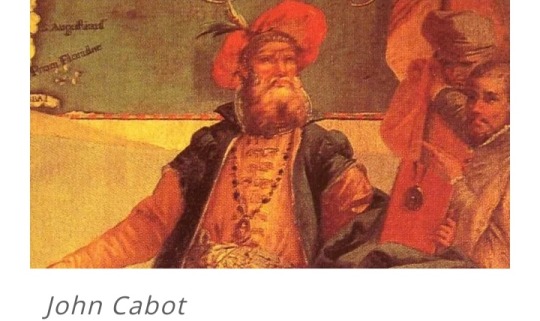
Long before Europeans ever stepped foot in the New World, explorers searched in vain for the island of Hy-Brasil, a spectral atoll said to lurk off the west coast of Ireland.
The story of the island most likely comes from Celtic legend—its name means “Isle of the Blest” in Gaelic”—but its precise origins are unclear.
Hy-Brasil first started appearing on maps in the 14th century, usually in the form of a small, circular island narrowly split in two by a strait.
Many mariners accepted it as a real place until as recently as the 1800s, and it became popular fodder for myths and folktales.
Some legends described the island as a lost paradise or utopia.
Others noted that it was perpetually obscured by a dense curtain of mist and fog, and only became visible to the naked eye every seven years.
Despite its fanciful reputation, Hy-Brasil was widely sought after by Britain-based explorers in the 15th century.
The navigator John Cabot launched several expeditions to track it down, and supposedly hoped to encounter it during his famous journey to the coast of Newfoundland in 1497.
Documents from Cabot’s time claim that previous explorers had already reached Hy-Brasil, leading some researchers to argue that these mariners may have inadvertently traveled all the way to the Americas before Christopher Columbus.
3. Thule

A subject of fascination for ancient explorers, romantic poets and Nazi occultists alike, Thule was an elusive territory supposedly located in the frozen north Atlantic near Scandinavia.
Its legend dates back to the 4th century B.C., when the Greek journeyman Pytheas claimed to have travelled to an icy island beyond Scotland where the sun rarely set and land, sea and air commingled into a bewildering, jelly-like mass.
Many of Pytheas’ contemporaries doubted his claims, but “distant Thule” lingered in the European imagination.
It eventually came to represent the northernmost place in the known world.
Explorers and researchers variously identified it as Norway, Iceland and the Shetland Islands, and it served a recurring motif in poetry and myth.
The island is perhaps most famous for its connection to the Thule Society, a post-World War I esoteric organization in Germany that considered Thule the ancestral home of the Aryan race.
The Munich-based group counted many future Nazis among its guests, including Rudolf Hess, who later served as Deputy Führer of Germany under Adolf Hitler.
4. El Dorado
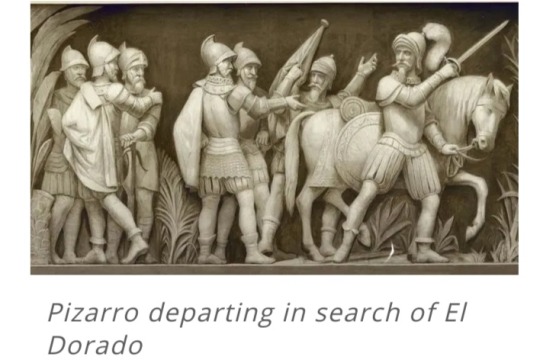
Beginning in the 16th century, European explorers and conquistadors were bewitched by tales of a mythical city of gold located in the unexplored reaches of South America.
The city had its origin in accounts of “El Dorado” (“The Gilded One”), a native king who powdered his body with gold dust and tossed jewels and gold into a sacred lake as part of a coronation rite.
Stories of the gilded king eventually led to rumors of a golden city of untold wealth and splendor, and adventurers spent many years—and countless lives—in a fruitless search for its riches.
One of the most famous El Dorado expeditions came in 1617, when the English explorer Sir Walter Raleigh traveled up the Orinoco River on a quest to find it in what is now Venezuela.
The mission found no trace of the gilded city, and King James I later executed Raleigh after he disobeyed an order to avoid fighting with the Spanish.
El Dorado continued to drive exploration and colonial violence until the early 1800s, when the scientists Alexander von Humboldt and Aimé Bonpland branded the city a myth after undertaking a research expedition to Latin America.
5. St. Brendan’s Island
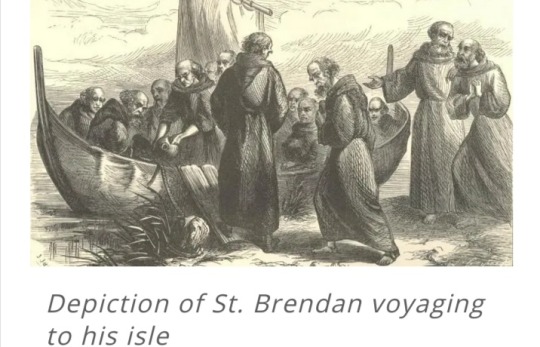
St. Brendan’s Island was a mysterious incarnation of Paradise once thought to be hidden somewhere in the eastern Atlantic Ocean.
The myth of the phantom isle dates back to the “Navigatio Brendani,” or “Voyage of Brendan,” a 1,200-year-old Irish legend about the seafaring monk St. Brendan the Navigator.
As the story goes, Brendan led a crew of pious sailors on a 6th century voyage in search of the famed “Promised Land of the Saints.”
After a particularly eventful journey on the open sea—the tale describes attacks by fireball-wielding giants and run-ins with talking birds—Brendan and his men landed on a mist-covered island filled with delicious fruit and sparkling gems.
The grateful crew are said to have spent 40 days exploring the island before returning to Ireland.
While there is no historical proof of St. Brendan’s voyage, the legend became so popular during the medieval era that “St. Brendan’s Island” found its way onto many maps of the Atlantic.
Early cartographers placed it near Ireland, but in later years, it migrated to the coasts of North Africa, the Canary Islands and finally, the Azores.
Sailors often claimed to have caught fleeting glimpses of the isle during the Age of Discovery, and it’s likely that even Christopher Columbus believed in its existence.
Nevertheless, its legend eventually faded after multiple search expeditions failed to track it down.
By the 18th century, the famed “Promised Land of the Saints” had been excised from most navigational charts.
6. The Kingdom of Saguenay

The story of the mirage-like Kingdom of Saguenay dates back to the 1530s, when the French explorer Jacques Cartier made his second journey to Canada in search of gold and a northwest passage to Asia.
As his expedition traveled along the St. Lawrence River in modern day Quebec, Cartier’s Iroquois guides began to whisper tales of “Saguenay,” a vast kingdom that lay to the north.
According to a chief named Donnacona, the mysterious realm was rich in spices, furs and precious metals, and was populated by blond, bearded men with pale skin.
The stories eventually drifted into the realm of the absurd—the natives claimed the region was also home to races of one-legged people and whole tribes “possessing no anus”—but Cartier became taken by the prospect of finding Saguenay and plundering its riches.
He brought Donnacona back to France, where the Iroquois chief continued to spread tales of a lost kingdom.
Legends about Saguenay would haunt French explorers in North America for several years, but treasure hunters never found any trace of the mythical land of plenty or its white inhabitants.
Most historians now dismiss it as a myth or tall tale, but some argue the natives may have actually been referring to copper deposits in the northwest.
Still, others have suggested that the Indians’ Kingdom of Saguenay could have been inspired by a centuries old Norse outpost left over from Viking voyages to North America.
#The Kingdom of Prester John#Hy-Brasil#Isle of the Blest#John Cabot#Thule#Phytheas#Thule Society#Aryan race#El Dorado#Sir Walter Raleigh#King James I#Alexander von Humboldt#Aimé Bonpland#St. Brendan’s Island#Voyage of Brendan#Kingdom of Saguenay#Jacques Cartier#Donnacona
3 notes
·
View notes
Photo

For those who only think of Lin Carter as an editor and pastiche creator, I suggest they take a closer look at his extremely humorous, lighthearted, and satiric Terra Magica series. Lin Carter is a giant in the world of fantasy, his work editing the Ballantine Fantasy Paperback Line essentially created the modern fantasy canon by what it chose to reprint in paperback. His Terra Magica series has a fascinating idea: what if Medieval concepts of the world were absolutely right? The world is flat, there are countries of dog-headed men and men with faces in their chests, and you can find the Fountain of Youth in Prester John’s Kingdom, if you can avoid the griffins, three-eyed ogres, and pagan Muslims who pray to the evil god Termagant.
Lin Carter claims that it was inspired by Orlando Furioso, but a closer and more direct inspiration he’d probably not admit to (but is obvious to a fantasy lover) is the Poictesme series by James Branch Cabell (specifically the humor) and the light, comedic romps of L. Sprague de Camp in Viagens Interplanetarias.
130 notes
·
View notes
Photo

A 1690 map of central Africa featuring the kingdom of Prester John -- a mythical Christian king that some Europeans had believed to exist since the 1100s. At times he was placed in Asia, but here his kingdom is supposedly located in Ethiopia.
{WHF} {HTE} {Medium}
60 notes
·
View notes